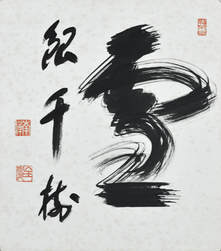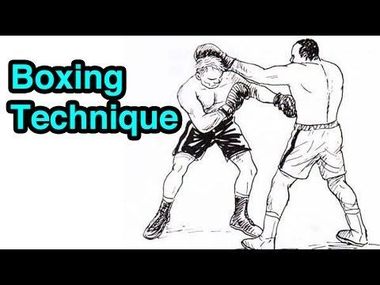|
There are many assumed connections between the philosophies of Buddhism and Taoism and the martial arts. In over 45 years of the study and practice of both I rarely find any meaningful intersection of the two, there is generally just a shadow of the philosophy taught in the martial arts. I would like to talk about one of the most misunderstood yet most vital concepts of Taoism which is ‘wu-wei’ or non-doing. This is not simply some pie in the sky saying that has no meaning in real life but is actually the product of true training and practice in the arts and is essential to true mastery of any form of art. You don’t have to be a monk to realize the benefits of the actualization of these ideals; you just need to apply yourself completely and wholeheartedly to realizing them. Wu wei means to’ not do’. This is often misunderstood as a simple ‘doing nothing’ but that is completely wrong. The entire phrase should be ‘wei-wu-wei’ or to do without doing. How can we do something without doing it? It’s a contradiction. How can I kick or punch without kicking or punching? The fact that I choose to do this means I am doing it and therefore I have lost ‘not doing’. To understand this fully you have to think about the process of learning. When we first learn there is a conflict between mind, body and teacher. Our teacher shows us something and we attempt to imitate him. We see what we are supposed to do and try to understand it. We try to do it but our bodies aren’t conditioned to do it yet so we practice over and over. After a time our bodies grow and adapt and we can do it freely without taxing our bodies but we are still just doing it. It is a product of our thought, we think kick and we kick or block and block. We are doing technique, it is a conscious act. There is something dramatically different between what a real master is doing and what we are doing, but it’s hard to see what it is. If we really practice over and over it will become ingrained in us to such an extent that we are the motion, we are the kick, we just ‘do it’ without any self awareness or thought in our mind, it just happens. This is doing it without doing it, it has become a reflex, we do not decide to do it, it just flows outward from us. Though this is more desirable than just doing, it is still not complete for at anytime our mind can arise and we will be aware of ourselves and be doing it again. We learn how to do it by doing it but until we become it, we are just imitating it. A real master is it all the time. He knows he cannot teach us anything but can only point the way and hope that we figure it out for ourselves. I find that playing music often works well when trying to explain this concept. If you’ve ever practiced an instrument you know how hard it is to overcome technique. Your fingers hurt, you’re trying to remember what to do and it sounds bad. Because it’s an external instrument it’s easy to see the difficulty in learning it. After a while you might master a few chords or songs but you are limited by that knowledge, you are still playing the instrument or ‘doing it’. You might reach a point where you can play quite well and be pretty content on the warehouse of songs or techniques you’ve built up but then you go out into the world of real musicians and realize you are lost. Someone who has not just practiced but played over and over again can become free of their instrument, they are no longer aware of it, they just express the song through it. After you hear someone great play you might ask them what they did and often they reply, “I don’t know”. They are no longer a person playing an instrument but the expression of the song or music, in the moment. It flows freely without the self or mind in between. They are unconscious of technique but they are aware of what is happening in the moment and playing it as it happens. If they need to hear what the other players are doing then they will be behind, be re-acting, and thus not gel with the other players. Decades ago I did a show with Julius Erving for about a year. It was a talk show format and we shot it on Monday mornings. I am not a sports person and knew the name Dr J but really knew nothing about him or his career. This was the last year of his career when we did the show. I think he liked the fact that I didn't know who he was and I was not a sycophant. Often we talk before in the mornings before the shoot began or we'd chat at lunch time. At one point I said to him," I think I know how you feel running down the court". He replied with a smile, "Yeah, and how do you think that is?" I said, " It just happens. You are unaware until you've finished a rush or shot, you just go, unaware of exactly what you are doing yet fully in control. When you see the young players on the court you see their effort, they are forcing through the game while you are submersed in it". He got a really surprised look on his face and said, "Now how would you know that? It's true man, the young guys try too hard, you have to let it happen". I then went on to explain the concept of wei-wu-wei to him. Although it's a Chinese expression the experience is not limited to any culture or historical perspective and he understood completely because he lived it. Although athletes today call it 'the zone' it can be cultivated much more deeply than that. Martial arts is the same. Until you practice and engage with others to the point that you are no longer there, no longer doing it, you will always remain outside the moment. We must free ourselves from technique like the musician does so we can move freely to do what is necessary. In this moment we are free from technique and the thoughts of life and death. This is pure art, purely in the moment, yet fully aware to do the right thing at the right time even if that be to do nothing. I often tell students that there is no such thing as self-defense and have been criticized greatly for it but I still stand by this. When you defend yourself you are standing back from the motion, you are letting the opponent control you. You are reacting to them not blending into and overcoming them. The dictionary definition of defense is ‘to fight off’. Too many today think it’s block or step back from the attack. This will only get you hurt. Many years ago I met a visiting Akido master from Japan. I was told that this was a purely defensive art and there was no aggression. The teacher agreed to do some practice with me and when I handed him a punch he immediately, and gentlemanly, sent me to the ground. I asked him, ‘what is purely defensive about slamming someone to the ground’ and he thought for a second and laughed. This is an offensive act and a correct act. To think you just ward off someone or try to subdue them is very dangerous. I have maintained for years that you attack the attack, not defend against it. This does not mean to meet power with power but to put yourself into the position to attack the attack with whatever it takes and whatever you need to do. It might mean that you step back but to do so that the opponent moves to the place you need to get him. You move forward or backward attacking, not defending. To put your mind in a defensive posture is to let the opponent control what you do. Yes, I know I am repeating myself, get used to it. If you have truly attained ‘doing without doing’, then you move as water or bamboo, freely and completely appropriately to the moment. There is no anger or judgment here, it is just pure motion. An animal does not defend itself with malice but it does do it with complete and total commitment and focus. The animal does what it does without knowing what it is doing. We humans have lost that ability and need to regain it. This can occur in any aspect of our lives be it martial arts, music, sport or any other creative pursuit. The samurai’s of old came to Zen not to study Buddhism but to overcome their fear of death so that they could fight in the moment, without concern for their safety, yet fight intelligently and effectively. In other words they needed to ‘do it without being there to do it’ to be free from life and death. Achieving this in a single technique is not enough; it must be embraced by the entire body and mind. When we face an opponent we react to what they do. That is, we do something in reaction to them. This is doing. Think of the term ‘react’, break it down to ‘re’ and ‘act’ or to act again. To react means that you are behind the other person in time, they are leading and you are reacting. This is natural because we see an attack, realize what it is and respond to it but it is too slow. To react is to be aware of your self under attack to have to defend. True ‘wei-wu-wei’ is do move without reacting, to be as one with the other like a mirror reflecting their motion. This is not a mindless mimicking of the other person because you still have to intelligently defend your self, do the right thing to survive. It causes the contradiction of doing and not doing simultaneously. To be aware of what you are doing immediately makes you re-act, you are not in the moment. To just be mindlessly in the moment means you can’t make a judgment as to what you should do. By this I mean suppose it was just a friend sneaking up on you to scare you. Do you really want to hit him and hurt him, no, but how to make the distinction in the moment between a real threat or not becomes a problem. Instinctively we know what is happening. At the core of our existence before we even think about it we know it, without a thought, it is real and immediate. If you put your hand on a hot plate you don’t have to think ‘this is hot’ before removing it, your body knows without your mind perceiving. This type of deep knowing exists with us all the time but our minds get in the way so we don’t see it. We try to ‘know’ what is happening and miss what is already there to see. The core of martial arts is to reach this place of 'pure being', to reach the core of life. Then all of your actions will harmonize with nature as you are nature fulfilling itself. "We are the paintbrush mistaking itself for the painter".
|
The MomentIdeas, articles, lessons, and retrospective moments. Categories
All
Archives
March 2021
|


 RSS Feed
RSS Feed